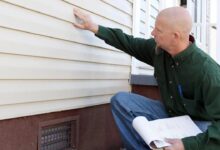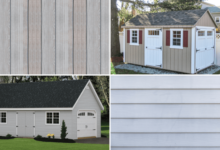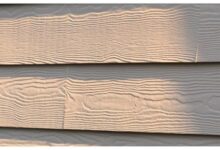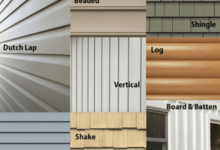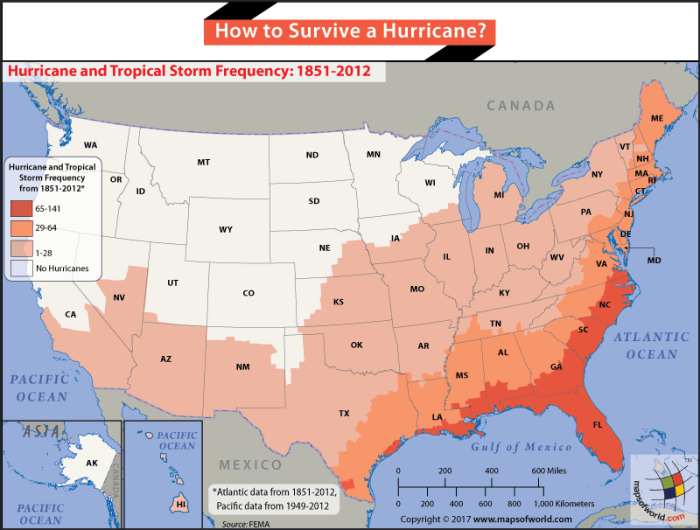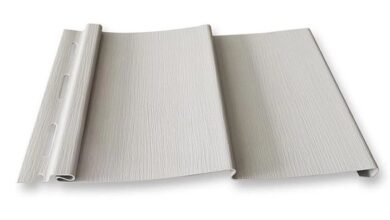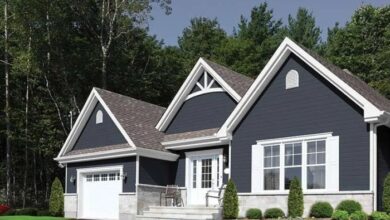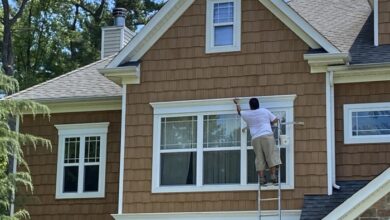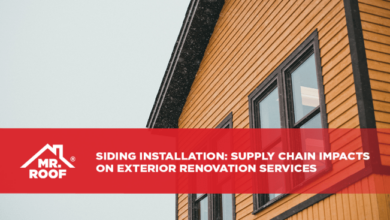Siding Options For Coastal Homes
Siding Options For Coastal Homes: The salty air, relentless sun, and powerful storms of coastal living demand siding that’s more than just aesthetically pleasing; it needs to be a fortress against the elements. Choosing the right siding isn’t just about curb appeal; it’s about protecting your investment and ensuring your home stands strong against the unique challenges of a beachfront property.
This guide dives deep into the best siding options, from durable fiber cement to weather-resistant metals, helping you navigate the choices and make an informed decision for your coastal haven. We’ll explore the pros, cons, and maintenance needs of each, providing you with the knowledge to build a home that will weather the storm – literally.
From the resilience of fiber cement to the classic charm of wood (with the right treatment, of course!), and the modern sleekness of metal, we’ll uncover the secrets to selecting siding that not only looks stunning but also provides long-lasting protection. We’ll also consider the less obvious options, such as stucco and other cladding materials, examining their suitability and cost-effectiveness in coastal environments.
Get ready to transform your coastal dreams into a reality, one durable board at a time.
Introduction to Coastal Home Siding
Coastal homes face a unique set of challenges when it comes to exterior maintenance. The relentless assault of salt spray, wind, and sun demands siding materials that are far more robust than those used inland. Choosing the wrong siding can lead to costly repairs, reduced property value, and even structural damage. Selecting durable and weather-resistant siding is paramount for protecting your investment and ensuring the longevity of your coastal property.
This is particularly crucial given the often-higher value of coastal real estate.The harsh coastal environment necessitates siding materials capable of withstanding constant exposure to moisture, intense UV radiation, and strong winds. Materials must resist the corrosive effects of salt air, which can accelerate deterioration and compromise the structural integrity of the home. Ignoring these factors can lead to significant problems down the line, including warping, rotting, peeling paint, and ultimately, the need for premature replacement.
Common Coastal Siding Materials
A range of siding options exist, each with varying degrees of suitability for coastal environments. The optimal choice depends on a number of factors, including budget, aesthetic preferences, and the specific environmental conditions of the location. Understanding the strengths and weaknesses of each material is key to making an informed decision.
Fiber Cement Siding
Fiber cement siding combines cement, cellulose fibers, and sand, resulting in a remarkably durable and low-maintenance material. Its resistance to moisture, rot, and insect infestation makes it an excellent choice for coastal settings. Furthermore, fiber cement siding is incredibly resistant to fire and can withstand strong winds, making it a resilient option in hurricane-prone areas. Its versatility in mimicking the appearance of wood or stucco also offers significant aesthetic flexibility.
For example, James Hardie, a leading manufacturer, offers a wide variety of styles and colors to match various architectural designs. The initial cost might be higher than some alternatives, but its longevity often makes it a cost-effective solution in the long run.
Vinyl Siding
Vinyl siding is a popular choice for its affordability and ease of maintenance. However, its suitability for coastal areas is more nuanced. While some high-quality vinyl siding is designed to withstand harsh weather conditions, less durable options can crack, fade, or warp under prolonged exposure to intense sunlight and salt spray. Therefore, careful selection is crucial; look for vinyl siding specifically rated for coastal use and featuring UV protection and impact resistance.
A thicker gauge vinyl will generally offer superior durability compared to thinner options. Remember to always check the manufacturer’s warranty and specifications to ensure it’s suitable for your specific coastal environment.
Metal Siding
Metal siding, typically made of aluminum or steel, offers exceptional durability and weather resistance. It’s impervious to rot, insect damage, and the corrosive effects of salt air. Furthermore, metal siding is incredibly strong and can withstand high winds and heavy rains. The downside is that metal siding can be more expensive than other options and can be prone to dents.
However, its longevity and low-maintenance nature often offset the higher initial cost. Proper installation is critical to ensure water tightness and prevent issues such as rust or corrosion. Powder-coated finishes provide added protection against fading and corrosion.
Fiber Cement Siding for Coastal Homes
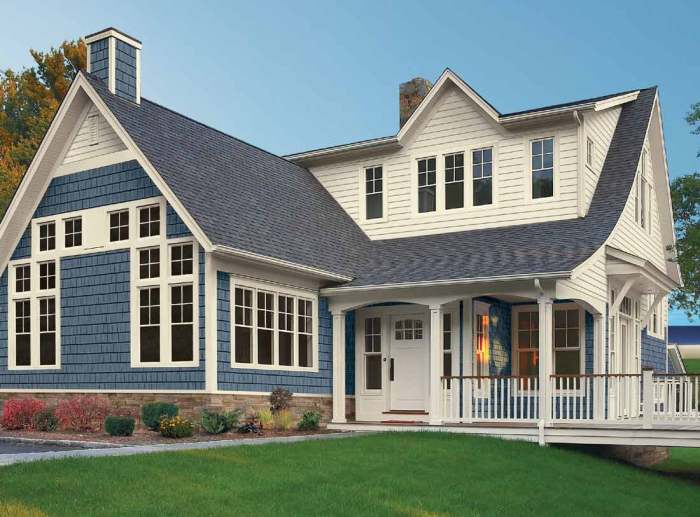
Fiber cement siding has emerged as a popular choice for coastal homes due to its exceptional durability and resistance to the harsh elements prevalent in seaside environments. Its ability to withstand moisture, salt spray, and strong winds makes it a superior alternative to many other siding materials, offering homeowners long-term protection and peace of mind. This section delves into the specifics of fiber cement siding, exploring its benefits, brand comparisons, and maintenance needs in coastal settings.
Benefits of Fiber Cement Siding in Coastal Environments
Fiber cement siding’s inherent composition—a blend of cement, cellulose fibers, and other additives—provides exceptional resistance to moisture damage. Unlike wood, which is susceptible to rot and insect infestation in humid coastal climates, fiber cement remains remarkably stable. The dense material effectively repels water, preventing its penetration and minimizing the risk of mold and mildew growth. Furthermore, its resilience to salt spray, a common corrosive element in coastal areas, significantly extends its lifespan.
The robust nature of fiber cement also allows it to withstand strong winds and even flying debris, a crucial consideration in hurricane-prone regions. This inherent strength translates to reduced repair costs and prolonged structural integrity for coastal homes.
Comparison of Fiber Cement Siding Brands, Siding Options For Coastal Homes
Several reputable brands manufacture fiber cement siding, each offering slightly different performance characteristics and price points. Direct comparison allows homeowners to make informed decisions based on their specific needs and budget. For example, James Hardie, a leading brand, is known for its extensive range of products and robust warranties, particularly for its engineered wood fiber cement, offering superior resistance to moisture and impact.
CertainTeed, another significant player, provides a wide selection of styles and colors, often at a slightly more competitive price point. However, direct comparisons of their performance in extreme coastal conditions may show subtle differences in longevity. Ultimately, the choice depends on a balance of budget, desired aesthetic, and the specific challenges presented by the coastal environment.
Maintenance Requirements for Fiber Cement Siding in Coastal Areas
While fiber cement siding requires minimal maintenance, regular inspections and occasional cleaning are crucial, especially in harsh coastal environments. Salt spray can accumulate on the surface, potentially leading to staining over time. Regular cleaning with a pressure washer (using a low-pressure setting to avoid damage) can effectively remove salt deposits and restore the siding’s original appearance. Periodic checks for any signs of damage, such as cracks or loose panels, are also recommended.
Prompt addressing of any damage prevents further deterioration and protects the structural integrity of the home. Proper maintenance ensures the long-term durability and aesthetic appeal of the fiber cement siding, maximizing its return on investment.
Fiber Cement Siding Brand Comparison Table
| Brand | Approximate Cost (per sq ft) | Durability Rating (1-5, 5 being highest) | Maintenance Needs |
|---|---|---|---|
| James Hardie | $3.50 – $6.00 | 5 | Periodic pressure washing; occasional repairs |
| CertainTeed | $3.00 – $5.00 | 4 | Regular cleaning; inspection for damage |
| Nichiha | $4.00 – $6.50 | 4.5 | Moderate maintenance; occasional repainting |
| Allura | $2.50 – $4.50 | 3.5 | More frequent cleaning; higher potential for damage |
Vinyl Siding and Coastal Environments: Siding Options For Coastal Homes
Vinyl siding, a popular choice for its affordability and low maintenance, presents a complex proposition for coastal homes. The harsh realities of salt spray, intense UV radiation, and relentless wind necessitate a careful evaluation of its suitability before committing to this material. While seemingly straightforward, the longevity and aesthetic appeal of vinyl siding in coastal settings hinge on several crucial factors.
Understanding these factors is key to making an informed decision that balances cost-effectiveness with long-term durability.Choosing vinyl siding for a coastal home requires a thorough understanding of its potential vulnerabilities and strengths. Unlike more robust materials like fiber cement, vinyl’s susceptibility to damage from environmental stressors necessitates careful consideration of product selection and installation. The right approach can mitigate many of the inherent risks, ensuring a visually appealing and long-lasting exterior.
Vinyl Siding Types Suitable for Coastal Conditions
Selecting specific vinyl siding types designed to withstand coastal conditions is paramount. Higher-quality vinyl siding, often thicker and featuring enhanced UV inhibitors and impact modifiers, will offer superior protection against the elements. Look for products with a Class A fire rating, which often correlates with improved durability. Furthermore, consider the color and finish; lighter colors reflect sunlight better, mitigating UV degradation.
Understand how the union of Siding Repair Costs can improve efficiency and productivity.
Investing in premium vinyl siding might represent a higher upfront cost, but the potential savings in long-term maintenance and replacement far outweigh this initial investment. For example, a high-end vinyl siding with a thicker gauge and reinforced UV protection could last significantly longer than a standard product in a harsh coastal environment, resulting in less frequent repairs or replacements.
Impact of UV Exposure and Salt Spray on Vinyl Siding Longevity
Prolonged exposure to intense UV radiation and salt spray significantly accelerates the degradation of vinyl siding. UV rays can cause the vinyl to fade, become brittle, and eventually crack. Salt spray, on the other hand, can lead to corrosion of fasteners and underlying materials, compromising the structural integrity of the siding. The combination of these factors can drastically shorten the lifespan of the siding, requiring premature replacement and incurring additional costs.
This is especially true for cheaper vinyl siding, which may contain less UV protection. For instance, a home located directly on the oceanfront might experience a noticeable reduction in siding lifespan compared to a home situated further inland, even with the same vinyl siding type. This highlights the importance of selecting the right siding based on the specific coastal exposure.
Design Considerations for Coastal Vinyl Siding
Careful design considerations can enhance the longevity and aesthetic appeal of vinyl siding in coastal settings. Choosing lighter colors reduces heat absorption and subsequent expansion and contraction, minimizing the risk of warping or cracking. Furthermore, ensuring proper ventilation behind the siding helps to prevent moisture buildup, reducing the likelihood of mold and mildew growth. Strategic use of trim and architectural details can further enhance the home’s visual appeal and distract from potential signs of weathering.
For example, a well-designed trim package can highlight the architectural features of the house and mask minor imperfections that may develop in the vinyl siding over time. This approach balances aesthetics with practicality, maximizing the lifespan and visual appeal of the vinyl siding in the demanding coastal environment.
Wood Siding Options for Coastal Homes
Choosing the right siding for a coastal home requires careful consideration of the harsh environmental factors at play. Salt air, moisture, and strong winds can quickly degrade materials, leading to costly repairs and compromised aesthetics. Wood, while beautiful and offering a classic look, needs specific attention in these demanding conditions. Selecting appropriate species and implementing proper maintenance are crucial for ensuring longevity and preserving the charm of your coastal residence.
Best Wood Siding Species for Coastal Environments
Several wood types demonstrate superior resistance to rot, decay, and insect infestation, making them ideal choices for coastal construction. Redwood and cedar, for example, naturally contain high levels of extractives that act as a natural defense against these threats. These inherent properties reduce the need for extensive chemical treatments, although some preventative measures are still recommended. Other durable options include cypress and certain treated pine species, each possessing unique qualities and varying levels of natural resistance.
The choice often depends on budget, aesthetic preferences, and the specific environmental conditions of the location. For instance, redwood’s rich color and exceptional durability make it a premium option, while cedar offers a more budget-friendly alternative with similar inherent protective qualities.
Protecting Wood Siding from Moisture and Insects
Preventing moisture damage is paramount in coastal environments. Regular cleaning to remove salt deposits and debris is vital. High-quality exterior-grade paints and stains provide an additional barrier against moisture penetration. Proper application techniques are key, ensuring complete coverage and allowing for adequate drying time between coats. A well-ventilated wall system is also crucial to prevent moisture build-up behind the siding.
Regarding insect protection, preventative measures are essential. Pre-treating lumber with borate-based preservatives before installation is a highly effective method of deterring wood-boring insects. Regular inspections for signs of infestation, followed by prompt treatment if necessary, are also crucial components of a comprehensive maintenance plan. Failure to address these aspects can lead to significant structural damage and costly repairs down the line.
A proactive approach minimizes risks and maximizes the lifespan of the wood siding.
Treated Lumber vs. Naturally Resistant Wood
The decision between treated lumber and naturally resistant species often comes down to a balance of cost, longevity, and environmental considerations. Naturally resistant woods, such as cedar and redwood, generally require less maintenance in the long run, thanks to their inherent protective qualities. However, they tend to be more expensive upfront. Treated lumber, often pressure-treated pine, offers a more budget-friendly alternative, but it may require more frequent maintenance and repainting to maintain its protection against the elements.
The treatment process itself also raises environmental concerns, particularly regarding the chemicals used. Choosing between these options requires careful weighing of these factors to align with individual priorities and budget constraints. For example, a homeowner prioritizing longevity and minimal maintenance might opt for redwood, while someone with a tighter budget might choose treated pine with a more robust maintenance plan.
Wood Siding Installation in Coastal Settings
Proper installation is crucial for ensuring the longevity of wood siding in a coastal environment. It begins with a thorough inspection and preparation of the underlying wall structure. This includes ensuring proper ventilation and waterproofing to prevent moisture build-up. The siding boards should be installed with appropriate spacing to allow for air circulation and expansion and contraction due to temperature and humidity fluctuations.
Using stainless steel fasteners is recommended due to their superior resistance to corrosion from salt air. Careful attention should be paid to sealing all joints and gaps to prevent water penetration. Flashing is essential around windows and doors to prevent water from entering these vulnerable areas. A professional installation ensures that these critical steps are followed correctly, contributing to the overall durability and aesthetic appeal of the finished product.
Neglecting these aspects can lead to premature deterioration and costly repairs, undermining the investment in high-quality wood siding.
Metal Siding for Coastal Homes
Metal siding offers a compelling alternative for coastal homes, boasting exceptional durability and low maintenance. Its resilience against harsh weather conditions, including salt spray and strong winds, makes it a practical choice in challenging coastal environments. The aesthetic versatility of metal siding also allows for seamless integration with various architectural styles, from traditional to modern. This section delves into the specifics of different metal siding materials and their suitability for coastal properties.
Metal Siding Material Comparison for Coastal Applications
Aluminum, steel, and zinc are the most common metals used in residential siding. Aluminum siding is lightweight and relatively inexpensive, offering good corrosion resistance. However, it’s less durable than steel and can dent more easily. Steel siding, while more robust and resistant to damage, requires careful consideration of its susceptibility to rust in highly saline environments. Zinc siding, known for its self-healing properties and attractive patina, provides excellent longevity and weather resistance, though it tends to be a more expensive option.
The choice ultimately depends on budget, desired aesthetic, and the specific coastal environment. For example, a home situated directly on the oceanfront might benefit from the superior corrosion resistance of zinc, while a home further inland might find aluminum a suitable and cost-effective solution.
Durability and Maintenance of Metal Siding in Coastal Conditions
Metal siding’s inherent strength and resistance to moisture damage are key advantages in coastal locations. Properly installed metal siding can withstand high winds, heavy rain, and the constant assault of salt spray, significantly reducing the need for frequent repairs or replacements. However, regular maintenance is still crucial for optimal performance. This involves periodic cleaning to remove salt deposits and debris, ensuring that any minor scratches or abrasions are addressed promptly to prevent corrosion.
Neglecting maintenance can lead to accelerated deterioration, especially in areas with high humidity and salinity. A well-maintained metal siding system can last for decades, offering a significant return on investment. For instance, a properly maintained steel siding system on a beachfront property in Florida could easily last 50 years or more, compared to the shorter lifespan of other materials like wood.
Aesthetic Appeal and Architectural Suitability of Metal Siding
Metal siding offers a wide range of aesthetic options, from smooth, contemporary panels to textured finishes that mimic the appearance of wood or stone. The color palette is extensive, allowing for customization to match the home’s architectural style and surrounding landscape. Metal siding can complement both traditional and modern designs, and its clean lines can create a sleek, sophisticated look.
For instance, a modern coastal home might feature sleek, dark gray aluminum siding, while a more traditional home could incorporate steel siding with a textured finish to emulate the look of weathered wood. The versatility of metal siding allows for considerable creative freedom in achieving a visually appealing and durable exterior.
Pros and Cons of Metal Siding for Coastal Homes
The decision to use metal siding for a coastal home involves weighing its advantages against potential drawbacks. Understanding these factors is crucial for making an informed choice.
Before considering the pros and cons, it’s vital to remember that proper installation is paramount to the longevity and effectiveness of any siding material, especially in a challenging coastal environment. A skilled contractor is essential for ensuring a watertight and durable installation.
- Pros: Durability, low maintenance, resistance to pests and rot, fire resistance, long lifespan, wide range of colors and styles, relatively easy installation (compared to some other materials), and recyclability.
- Cons: Can be more expensive upfront than some other options, susceptibility to dents (depending on the metal type), potential for noise amplification during rain or hail, and the possibility of expansion and contraction with temperature fluctuations requiring appropriate installation techniques.
Stucco and Other Exterior Cladding
Choosing the right exterior cladding for a coastal home requires careful consideration of durability, maintenance, and cost. While siding options have been explored, stucco and other cladding materials offer distinct advantages and disadvantages in the harsh coastal environment. Understanding these factors is crucial for making an informed decision that protects your investment and enhances the aesthetic appeal of your property.Stucco, a mixture of cement, sand, lime, and water, offers a durable and aesthetically pleasing finish.
However, its suitability in coastal areas is contingent on proper application and ongoing maintenance. The high salt content in coastal air can lead to premature deterioration if not adequately protected. Furthermore, the potential for moisture penetration, particularly in areas prone to hurricanes and heavy rain, is a significant concern.
Stucco Application and Maintenance in Coastal Environments
Proper stucco application is paramount in coastal regions. A crucial element is the application of a high-quality, water-resistant base coat, followed by a meticulous finish coat. This multi-layered approach creates a robust barrier against moisture penetration and salt damage. Regular maintenance, including cleaning to remove salt deposits and prompt repair of any cracks or damage, is essential to extend the lifespan of the stucco.
Ignoring these maintenance steps can lead to significant repair costs down the line, potentially necessitating complete replacement. Think of it like regularly servicing your car; preventative maintenance is far more cost-effective than emergency repairs. For instance, a proactive approach of washing away salt buildup every six months can prevent the need for costly repairs every few years.
Alternative Exterior Cladding Options
Beyond stucco, several alternative exterior cladding materials provide excellent protection and aesthetic appeal for coastal homes. Stone veneer, for example, offers exceptional durability and resistance to the elements. Its natural beauty complements many architectural styles, creating a timeless and elegant look. However, stone veneer can be significantly more expensive than stucco or other options. Brick veneer presents another strong contender, boasting superior durability and fire resistance.
The cost of brick veneer is typically higher than stucco, but it provides a longer lifespan and requires less maintenance, potentially offsetting the initial investment over time. A comparison of a 1500 sq ft home might reveal a $10,000 difference between stucco and brick veneer, but the brick’s longer lifespan might make it the more cost-effective choice in the long run.
Cost-Effectiveness of Exterior Cladding Materials
The cost-effectiveness of various exterior cladding materials varies greatly depending on factors such as material cost, labor costs, and the complexity of the installation. While stucco may initially seem less expensive, the potential for higher maintenance and premature deterioration due to coastal exposure can negate these initial savings. A cost-benefit analysis should consider the entire lifecycle cost, including initial investment, maintenance, and potential repairs or replacements.
For example, a cheaper initial stucco application might lead to significant repair costs over 10 years, while a more expensive, but durable material like brick veneer, might require minimal maintenance over the same period, ultimately proving more cost-effective. Careful consideration of these long-term factors is vital in making an informed and financially sound decision.
Illustrative Examples of Coastal Home Siding
Choosing the right siding for a coastal home is crucial, balancing aesthetics with the demanding environment. Salt air, moisture, and intense sun necessitate durable and visually appealing materials. Let’s explore three distinct examples showcasing the impact of different siding choices. Each exemplifies how the right material can enhance a home’s character and withstand coastal challenges.
Coastal Craftsman with Fiber Cement Siding
This charming craftsman-style home, nestled near the Pacific Ocean, boasts the inherent strength and beauty of fiber cement siding. The architectural style, characterized by low-pitched gables, exposed rafters, and overhanging eaves, is perfectly complemented by the clean lines and versatility of the fiber cement. The siding, painted in a warm, earthy tone – a sophisticated blend of greige with subtle hints of taupe – harmonizes beautifully with the natural surroundings.
The texture is subtly textured, mimicking the look of wood clapboard without the maintenance. This creates a refined, timeless aesthetic that effortlessly blends with the coastal landscape. The color palette extends to the trim, which is painted in a slightly lighter shade of the same greige, providing visual interest and definition without being jarring. The overall effect is one of relaxed elegance, a classic coastal home that feels both inviting and enduring.
Modern Beach House with Metal Siding
In stark contrast to the Craftsman, a contemporary beach house overlooking the Atlantic showcases the sleek sophistication of metal siding. This home’s architecture is defined by its clean lines, expansive windows, and open floor plan. The metal siding, in a cool, sophisticated shade of charcoal gray, perfectly embodies this modern aesthetic. The smooth, matte finish of the metal siding reflects the sunlight subtly, reducing glare while maintaining a contemporary feel.
This choice is not only visually striking but also highly practical, offering exceptional durability and resistance to harsh weather conditions. The color palette is intentionally restrained, using neutral tones that allow the home’s architecture and the surrounding ocean views to take center stage. The overall effect is a stunning display of minimalist design, showcasing the power of simplicity and functionality in a coastal setting.
A single accent color, perhaps a deep navy blue used for the window frames, adds a touch of visual interest without detracting from the home’s clean lines.
Mediterranean Villa with Stucco Siding
This Mediterranean-style villa, situated on a sun-drenched coastline, employs stucco as its exterior cladding. The stucco, a creamy off-white, perfectly complements the home’s arched doorways, terracotta roof tiles, and abundant use of natural stone. The texture of the stucco, slightly rough and uneven, adds depth and visual interest, mimicking the look of aged plaster found in traditional Mediterranean architecture.
This creates a warm, inviting aesthetic that feels both timeless and authentic. The color palette is rich and earthy, featuring warm terracotta accents in the roof tiles and window boxes, complemented by the cool, calming tones of the stucco. The overall effect is a luxurious and inviting space that evokes the warmth and charm of the Mediterranean. The use of decorative elements, such as wrought iron railings and patterned tile work, further enhances the home’s visual appeal and creates a cohesive, harmonious aesthetic.
This is a testament to how stucco can create a unique and inviting atmosphere, especially in a sunny coastal setting.
Closing Notes
Building a coastal home is a significant undertaking, and selecting the right siding is a crucial step in ensuring its longevity and beauty. By carefully weighing the pros and cons of each material – considering factors like cost, maintenance, durability, and aesthetic appeal – you can make a confident choice that perfectly complements your architectural style and withstands the harsh coastal environment.
Remember, the best siding is one that not only protects your home but also reflects your personal style and enhances the overall value of your coastal property. So, take your time, do your research, and choose wisely – your dream coastal home awaits!

